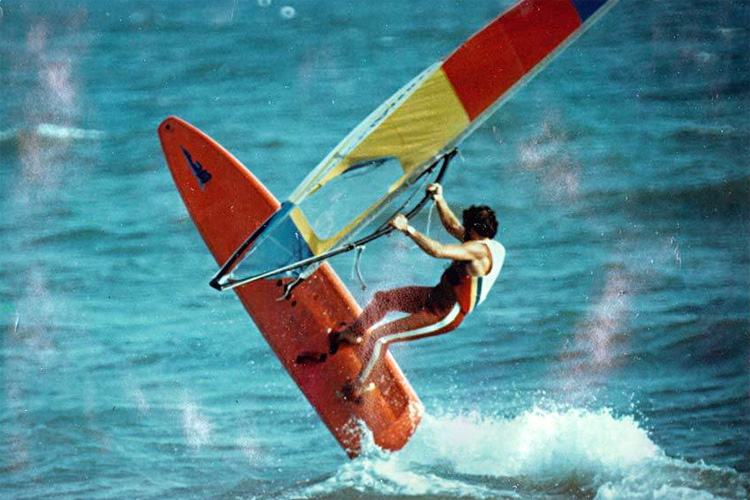Windsurfing is a relatively new sport. When it evolved from a cruising pastime to a high-performance outdoor activity, new doors opened, and freestyle windsurfing quickly became a hit.
The idea of performing exquisite and sometimes slightly uncomfortable and unnatural tricks started to take shape in the late 1970s and early 1980s.
Windsurfing pioneers understood that the sail pivots around the mast and that their boards could actually spin, turn, revolve and rotate.
The discovery changed everything, and the water sport conquered new participants.
But the tricks and maneuvers were dramatically different from what you see today.
There was less speed, heavier equipment, fewer aero and hydrodynamic designs, and almost no above-the-water jumps.
The first freestyle windsurfing "exhibitions" were held in rectangular competition areas with four buoys marking the corners.
Each three-minute freestyle routine showcased a more or less stylish performance that blended sailing with gymnastics.
A judging panel would award points based on the windsurfer's "choreography."
There were even some odd tandem windsurfing demonstrations that quite often ended in spectacular wipeouts.
Old School Freestyle Windsurfing Tricks and Techniques
Some of the most popular old-school windsurfing moves included:
1. The one foot;
2. The back-to-back turn;
3. The spin tack turn;
4. The back-to-sail and sail 360 combo;
5. The inner tack to split combo;
6. The head dip from split combo;
7. The back-to-front rail ride;
8. The back-to-back leeward rail ride;
9. The front to back rail;
10. The spin 180 into everoll;
11. The stern-first rail ride;
12. The clew first rail ride;
